Australian Tropical Rainforest Plants - Online edition
Endiandra anthropophagorum Domin

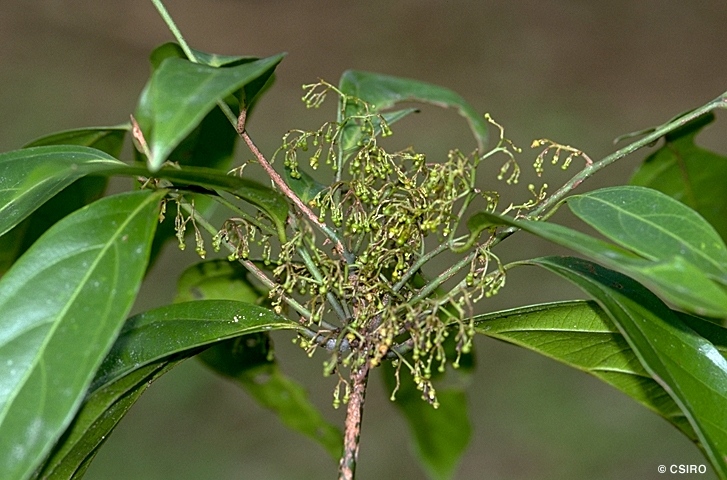
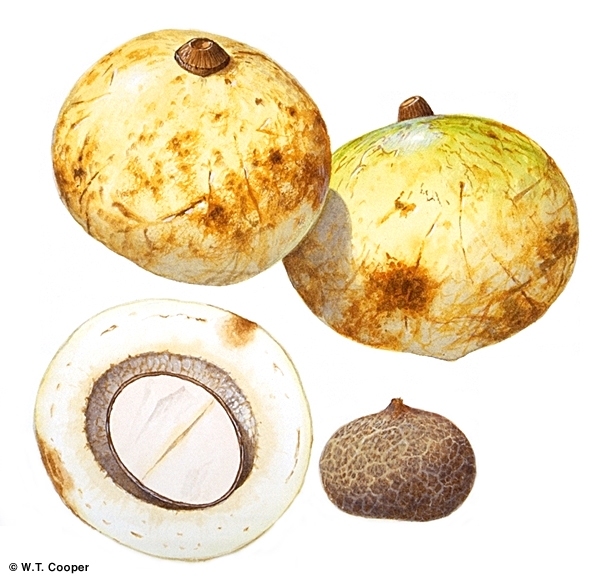

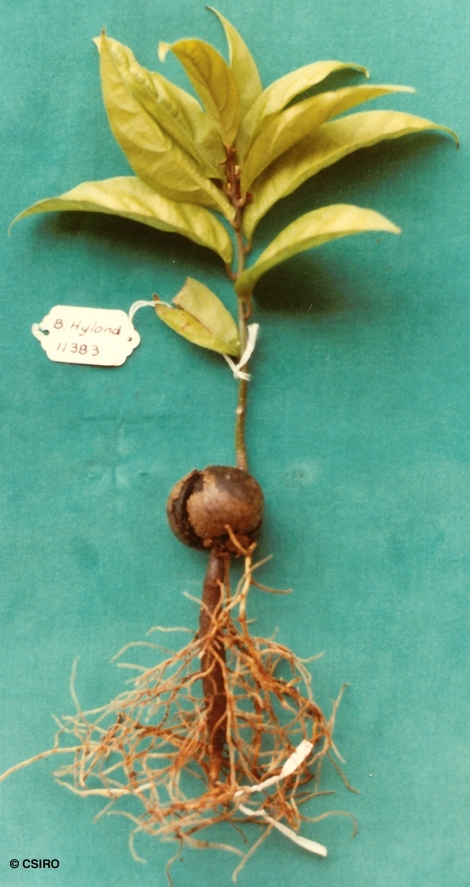
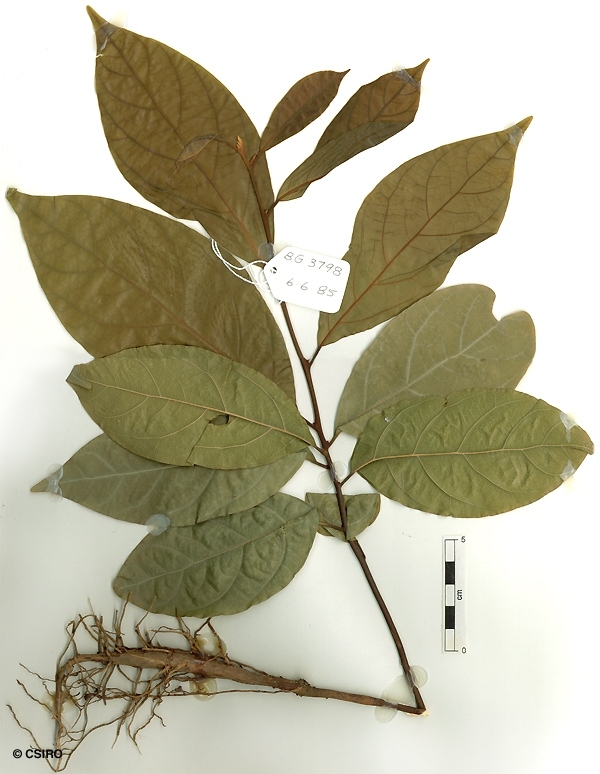
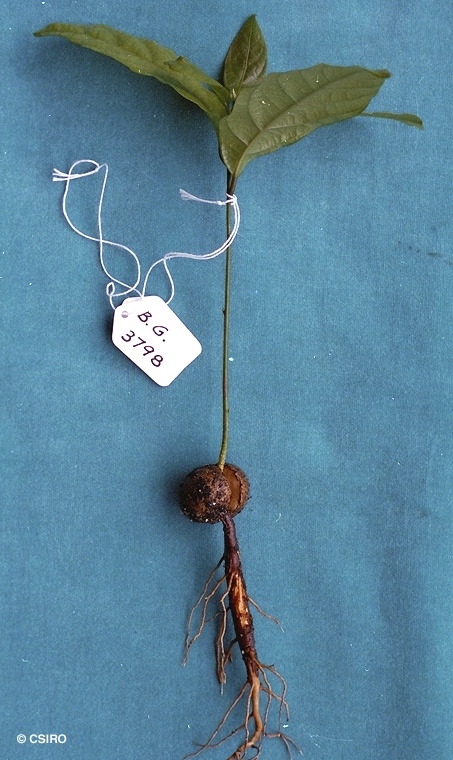
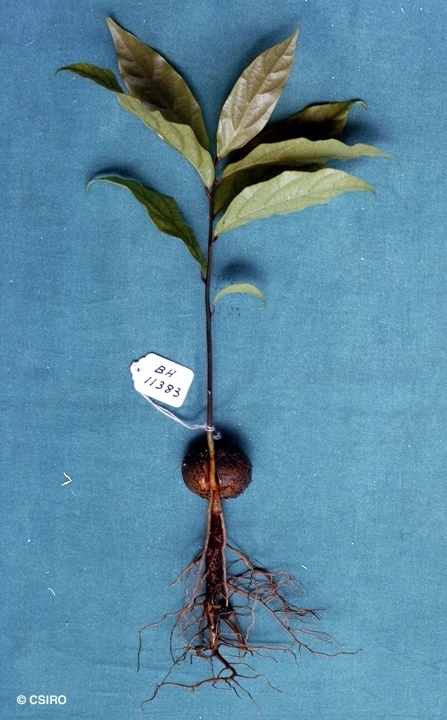
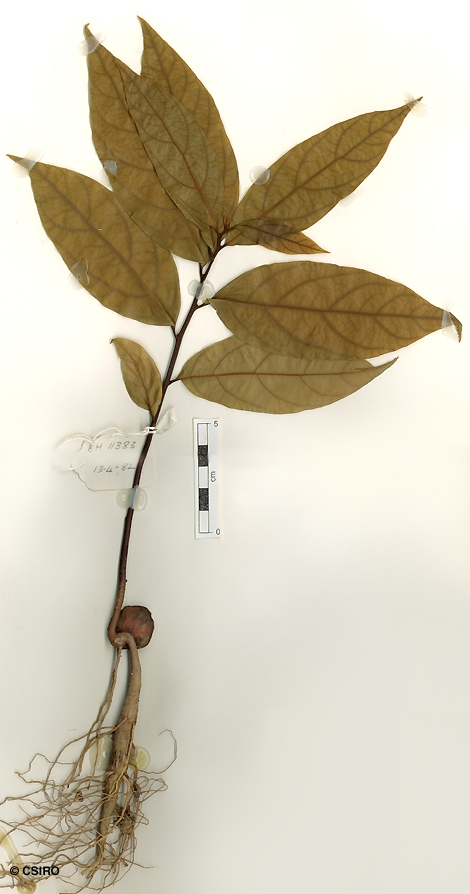
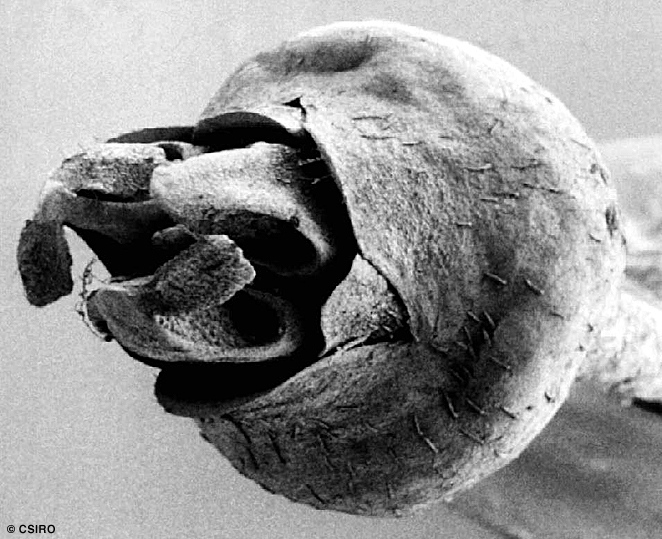

Domin, K. (1928) Bibliotheca Botanica 89(4): 677. Type: Qld, Harveys Creek, K. Domin 4098; holo: PR; K. Domin 4097; iso: PR.
A small tree less than 30 cm dbh. Blaze odour noticeable, usually aromatic but difficult to describe.
Twigs +/- terete to slightly fluted, glabrous or clothed in straight, pale brown, appressed hairs. Leaf blades about 9-16 x 3.5-6.5 cm, green on the underside, clothed in straight, pale brown, appressed hairs when young but soon becoming almost glabrous. Midrib depressed on the upper surface. Petioles channelled on the upper surface. Oil dots visible with a lens.
Tepals about 0.5-1.1 mm long, erect at anthesis forming a sheath around the anthers and style. Staminal glands six, free from one another or staminal glands absent. Staminodes three, +/- lanceolate.
Fruits globular about 43-65 x 44-64 mm. Seed about 19-33 x 22-36 mm. Cotyledons cream to pink.
First pair of leaves elliptic to ovate, about 80-110 x 35-48 mm, green on the underside. At the tenth leaf stage: leaf blade glabrous on the upper surface; oil dots small, visible with a lens, but difficult to see on older leaves; taproot thick, carrot-like (Daucus carota). Seed germination time 48 to 74 days.
Endemic to NEQ, known only from collections made in the Bellenden Ker-Babinda and Cape Tribulation areas. Altitudinal range probably quite small, most collections from 40-200 m. Grows as an understory tree in lowland rain forest.
This species has no commercial value as it never grows large enough to produce millable logs. Domin observed that the fruit was eaten by aborigines and applied a specific epithet which indicated that. Wood specific gravity 0.84. Hyland (1989).





